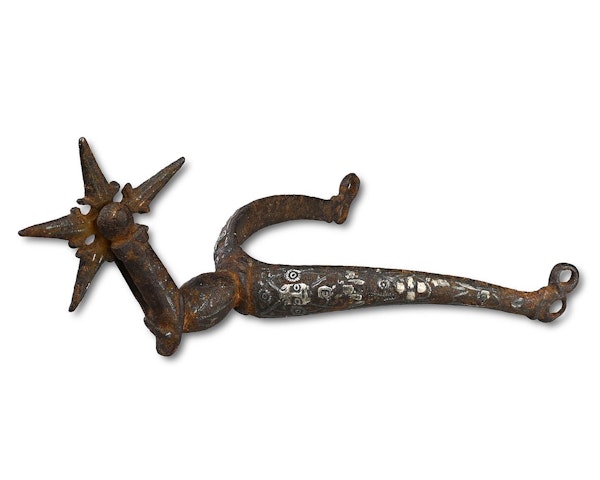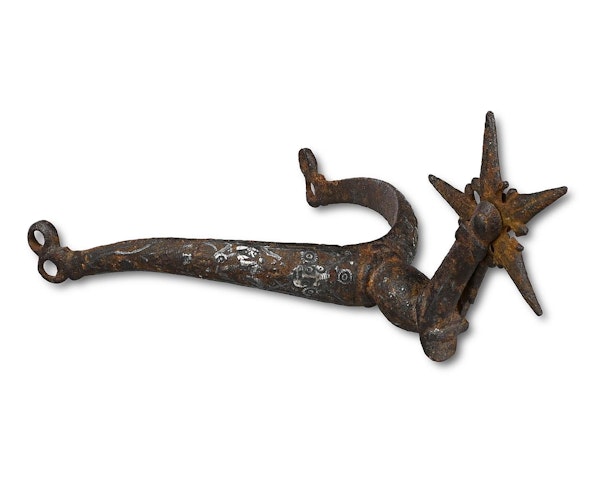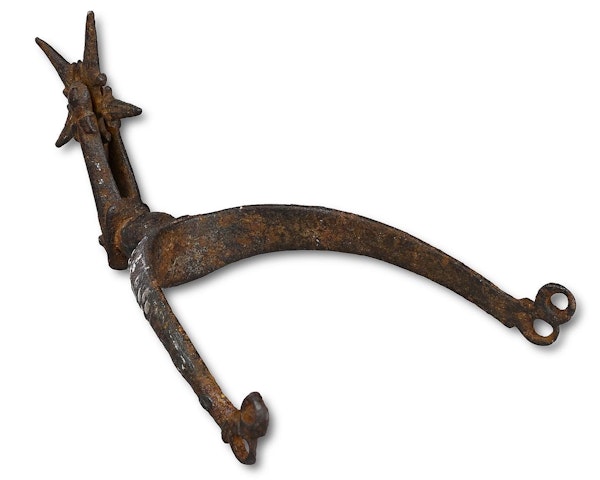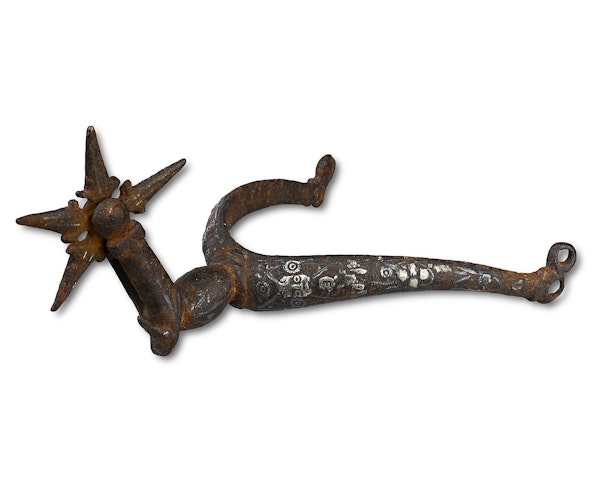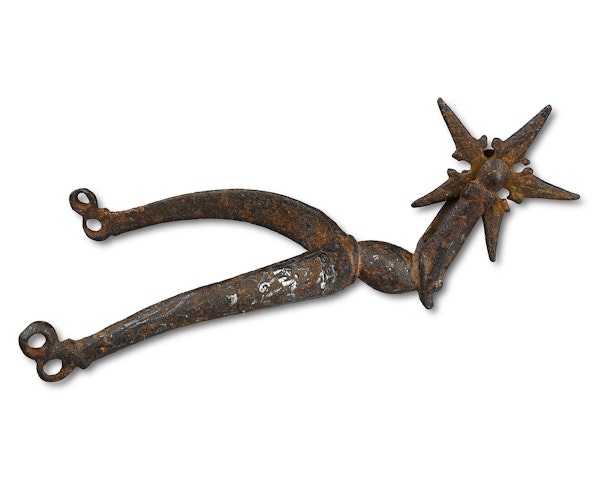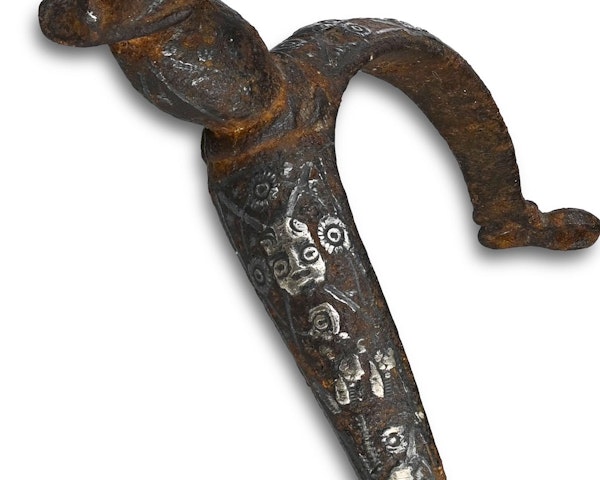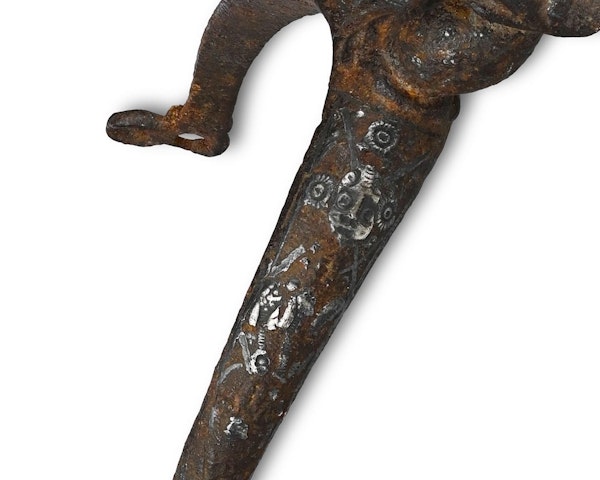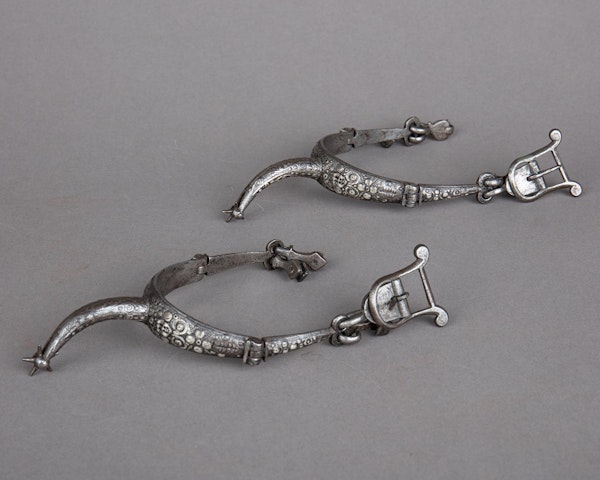Iron and silver rowel spur. English or German, 17th century.
Iron and silver rowel spur. English or German, 17th century.
£425.00
Description
Iron and silver rowel spur.
English or German, 17th century.
Measures 14 x 8.5 x 6cm.
The main body of the spur features the remains of rich decoration of putti’s heads, fruits and foliage inlaid with silver.
Provenance: by repute Arundel Castle
A similar pair of spurs catalogued as German can be found in the collection of the Metropolitan Museum of Art, New York, Accession Number: 42.50.375–376 (see last image).
‘In the first half of the 17th century, the fashion trend for gentlemen was to wear boots and spurs even non-riding circumstances, including for dancing or walking around at court. Spurs became then more than equestrian tools, but pieces of male jewelry often enriched by the same goldsmiths also working on armor and weapons. Their decoration was sometimes intended to match the sword hilt and the general outfit and horse tack of their owner. These trendy accessories were also a significant mark of status for gentlemen, sometimes nonetheless copied by the bourgeoisie. This fashion progressively disappeared after the mid-17th century.’ Ref: Metropolitan Museum of Art, New York, Accession Number: 42.50.375–376.
| item details |
|---|
Product REF: Iron and silver rowel spur. English or German, 17th century.
